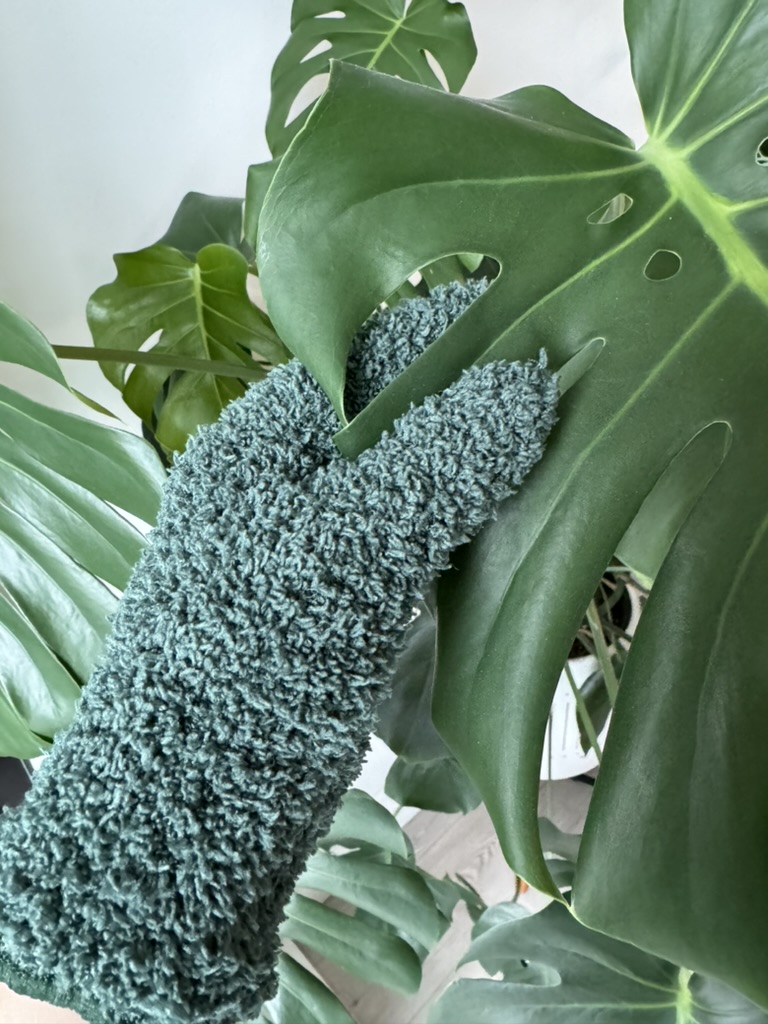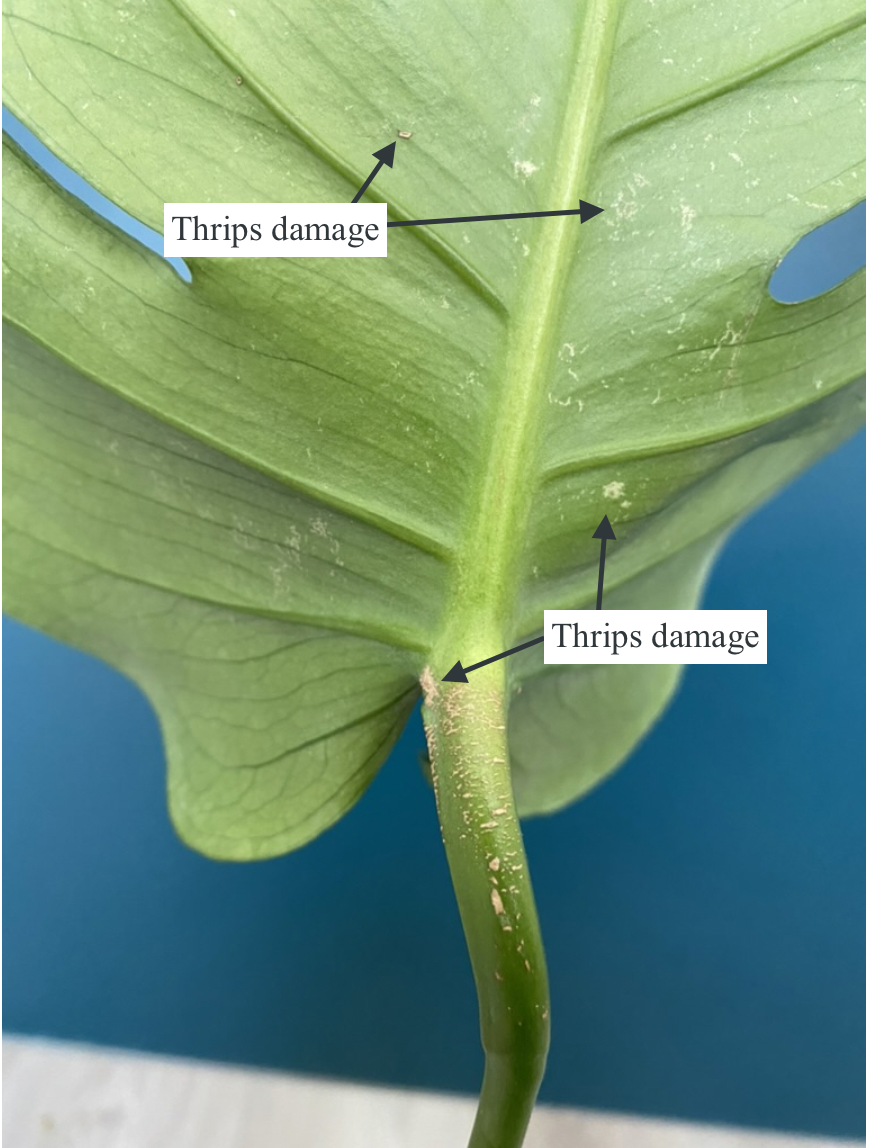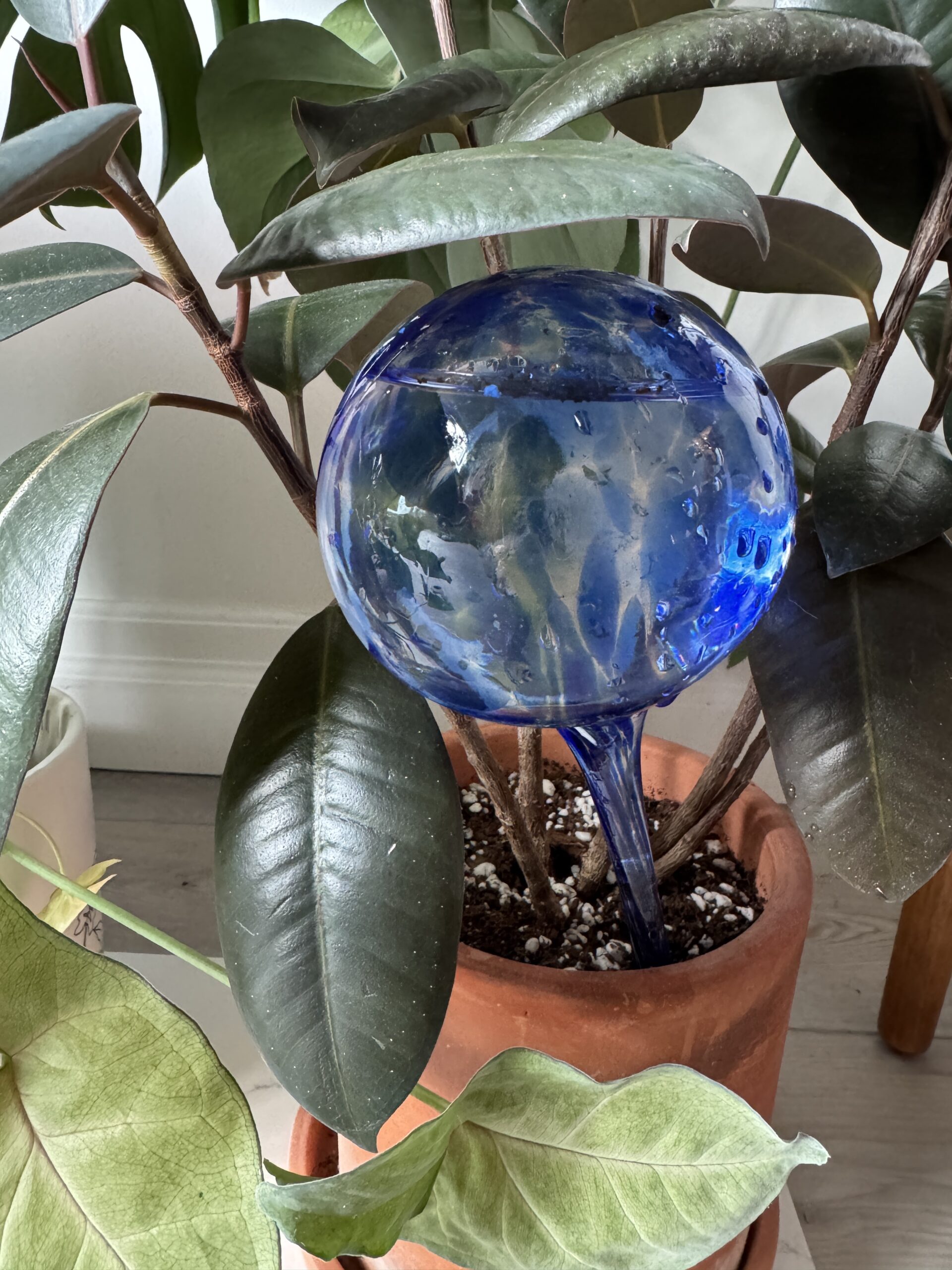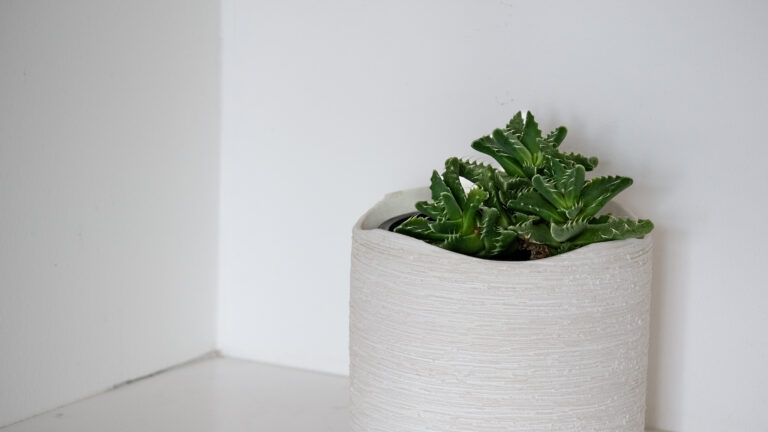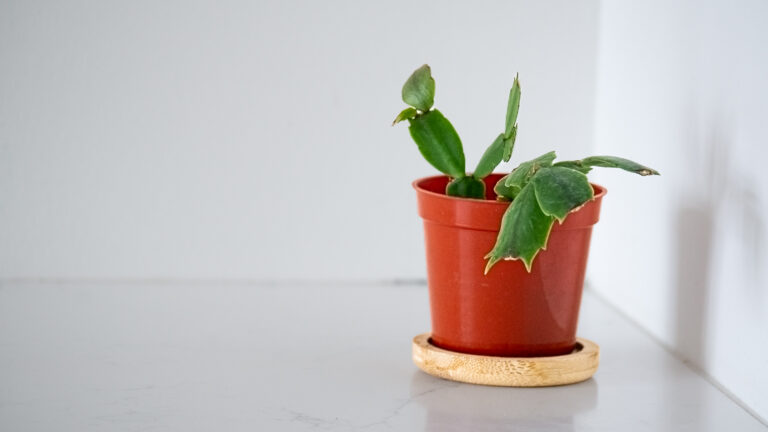Ponytail Palm or Beaucarnea recurvata is a member of the asparagaceae family. It is native to Southeastern Mexico.
Beaucarnea recurvata is referred to as the Ponytail Palm because it looks like a palm, that resembles a ponytail. It is also known as the Elephant Foot Palm due to the appearance of its stump.
The Ponytail Palm actually isn’t a palm.
There are around 2900 species of the asparagaceae family.
Ponytail Palm Appearance
Ponytail Palm has a thick, bulbous trunk that sort of resembles an elephant’s foot (hence its other common name of Elephant Foot Palm). The trunk stores water.
The top of the plant has long green, voluminous leaves that cascade down the trunk.
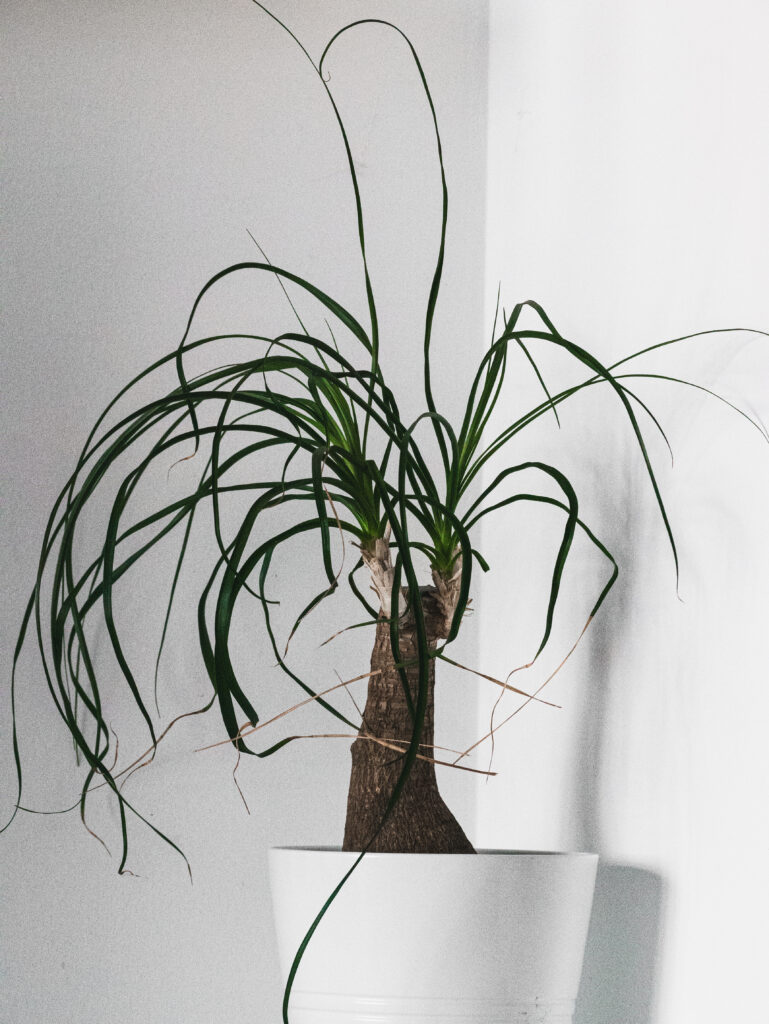
Light Requirements for Ponytail Palm
Ponytail Palm thrives in medium, direct & indirect light (a few hours of morning or afternoon sun, but primarily indirect light).
I’ve had this plant in both a northeast and a southwest facing room. In the Northeast, I had it closer to the window. In the Southwest, I had it in the middle of the room.
Ideal Temperature & Humidity for Ponytail Palm
Ponytail Palm prefers a temperature between 18 to 29 degrees celsius.
They also prefer low humidity. Mine is fine with my household humidity levels of (40-60%). I use the Levoit Hybrid Ultrasonic Humidifier (LV600HH) to ensure the humidity levels in my apartment stays between 40% and 60% for my other plants that like humid environments.
Growth Rate and Size of Ponytail Palm
On average, Ponytail Palm can grow up to 8 feet tall indoors.
New foliage grows from the top of the Ponytail Palm. The green leaves grow up straight, and thin. As the leaves age, they grow longer and have a curlier appearance.
To encourage growth, it is recommended you fertilize your Elephant Foot Palm monthly in spring and summer months.
How and When to Repot Ponytail Palm
You will know it is time to repot your Ponytail Palm if it shows signs of being root bound like the soil drying out too quickly, or roots growing out of the drainage holes of its pot.
It’s best to repot in early spring or summer. Choose a pot about 2 inches larger than the current one with good drainage to prevent waterlogging, and root rot. Use a well-draining succulent or cactus soil mix.
Gently remove the plant from its pot, gently loosen the root ball trying to avoid damaging the healthy roots. This is a good time to trim any dead or rotted roots. Add a bit of soil to the bottom of the pot, place the Ponytail Palm in its new pot, fill around it with fresh soil, pressing gently to eliminate air pockets, and leave about an inch of space at the top for watering.
After repotting, water thoroughly, but avoid fertilizing for several months to avoid fertilizer burn. New soil has nutrients, so fertilizing is unnecessary at this stage.
Blooming Habits of Ponytail Palm
The Elephant Foot Palm can bloom, but this is extremely rare, and can take up to 30 years.
When it does bloom, the flower stalks are small, with fragrant white or pink flowers.
Blooming is more common outdoors in warm climates. After flowering, the stalk can be trimmed, and some mature plants may produce offsets at the base. While rare, blooming is a sign of a healthy, well-established Elephant Foot Palm.
Propagating Ponytail Palm: Offsets, Cuttings & Seeds
The easiest way to start a new Ponytail Palm is by offsets.
- Offsets: Look around the base of the plant for offshoots. The tricky bit for this plant is their offsets lack roots. Make sure the offshoots are at least 4 to 5 inches tall before separating them from the mother plant. Gently remove them from the parent plant by separating them at the base. Set the pups aside for a couple of days until a callus forms. Once calloused, pot the offshoots into well-draining soil. Bury the cut end about 1/3 of the way down. Water the soil lightly and place in a bright location with indirect light. Eventually, roots will form and you will have a stable plant!
- Cuttings: The top of the Ponytail Palm has stems that grow out of the trunk. You can cut off one of the healthy stems (the images in this original post are helpful here to know where to cut). You can put these in water and wait for the roots to form or you can place this directly in soil. To increase the chances of rooting, you can use rooting hormone before placing in the soil or water. If you chose to water propagate, when it has 5 inch roots you can pot this into soil and then water it.
- Seeds: This is more tricky to do, but it is possible. You have to gather seeds from the flowers of a Ponytail Palm that lives outside (maybe you can buy some seeds, but I’m not certain). Before potting the seeds, you will have to soak them until a sprout emerges. This can take as little as a day. Once it has sprouted, plant the seeds into a grittier soil and sow the seeds into 3-inch containers. Press the seeds lightly into the surface of the soil and then dust them with a light layer of sand. You will want to keep the soil lightly moist. You can do this by keeping it in an area that is at least 20 degrees (68 degrees F), and cover the container with plastic wrap (this will create a mini greenhouse effect, but you can get this effect in other ways as well). The plastic should be removed once a day so any excess moisture can escape. Repeat this process until you see sprouts (this can take up to three months). Once you see sprouts, you can remove the plastic wrap and take care of your new Ponytail Palm like you usually would.
Patience is key with propagation. Give your new propagation time to settle into its environment. Once you see new growth, you know your plant is well established.
Watering Ponytail Palm: How and When
The Ponytail Palm likes to mostly dry out between waterings (this can take 2 to 3 weeks on average, depending on your environment).
To determine if your plant needs water, you can stick your finger in the soil (1 to 2 inches) and if it is dry, its ready for water!
If you don’t want to get your hands dirty, you can try a moisture meter.
I typically bottom water my Ponytail Palm through the drainage hole of the pot on a tray. This is the easiest way to know if your palm is thirsty or not. Overwatering can lead to fungus gnats, root rot, or the death of your plant.
You can top water, but it’s best to do so in a pot with drainage until water is flowing out of the drainage hole. If your pot doesn’t have drainage, you might accidentally drown your plant.
However, you should top water from time to time to make sure any built up minerals can wash through the plant. The water should drip out of the bottom of your drainage hole.
In the winter, you will want to reduce the amount you water, but from bottom watering, it will take in what it needs.
If you are headed on vacation, and worried about watering your Ponytail Palm, check-out my guide on 3 types of automated systems you can set up for vacation.
Common Pests and Problems in Ponytail Palm
Ponytail Palm can face the following pests and problems.
Ponytail Palm Pests
- Mealy Bugs: These look like little white cotton balls on plants. You can remove these with your fingers if you catch them early enough, but I would use a cotton swab with a drop of Isopropyl alcohol and try to scrape them off the stem.
- Scale: Scale are small, brownish, round or oval insects that attach themselves to the leaves of the Ponytail Palm. They are hard to notice as they appear like a growth or bump on the plant. Scale can cause yellowing, wilting, and weakened growth. Removing scale from any plant is tedious, like with mealybugs. You can remove scale by manually removing them with a cotton swab with isopropyl alcohol, using insecticidal soap or neem oil.
- Spider Mites: If spider mites have taken to your Ponytail Palm, spray them with a mixture of neem oil, dish soap and water (or you can buy an insecticidal soap). You will know you have spider mites if you see webbing and leaf damage. Learn how to get rid of Spider Mites.
- Fungus gnats: Spray the Ponytail Palm with a mixture of neem oil, dish soap and water. I also let the soil dry out and add dryer sheets on top of the soil so the gnats can’t sense the moisture on the soil.
Common Ponytail Palm Problems
- Yellowing Leaves: If you have a new leaf coming in, your plant is likely fine. Plants pull energy from older leaves to support new growth. But it can also indicate over- or under- watering or lighting issues.
- Overwatering: Root rot happens from overwatering your plant with insufficient drainage. You can improve the drainage of your Ponytail Palm by ensuring your plant is potted in a planter with a drainage hole and using a well draining soil (something with a decent amount of perlite). You can also end up with fungus gnats or fungal disease from overwatering.
- Underwatering: Even though plants prefer to be underwatered instead of overwatered, you still have to remember to water your plants on a consistent schedule. Signs of underwatering can include leaves becoming shrivelled, discoloured or dry.
- Drooping Leaves: Your plant is likely thirsty. Just give it a little water and it should be as good as new.
- Crispy Leaves: Your plant is underwatered and needs to be watered
- Brown Leaf Tips: Soil compaction (you need to aerate the soil of your Elephant Foot Palm) or the humidity is too low.
Ponytail Palm Toxicity
Ponytail Palm are typically not toxic to touch or consume, however some people may experience allergic or adverse reactions from chewing on the plant.
If the plant is ingested, and you notice persistent vomiting or unusual symptoms after ingestion, consult a veterinarian (for a pet) or healthcare provider (for a human) as a precaution.
Ponytail Palm Quick Care Guide
| Scientific Name | Beaucarnea recurvata |
| Nickname | Ponytail Palm, Bottle Palm, Elephant Foot Palm |
| Origins | Southeastern Mexico |
| Light | Medium, direct & indirect (a few hours of morning or afternoon sun, but primarily indirect light) |
| Temperature | 18-29 degrees celsius (preferred) |
| Humidity | Low |
| Height | Up to 8 feet indoors |
| Blooms | Yes, but it can take up to 30 years |
| Propagate | Stem cuttings, Offsets, or Seeds |
| Water Frequency | When mostly dry (every two to three weeks) |
| Pests | Mealy Bugs, Scale, Spider Mites, Fungus Gnats |
| Common Problems | Overwatering (root rot, yellowing leaves), underwatering (crispy leaves), brown leaf tips |
| Toxicity | Non-toxic |
References
Below is a list of external sources I consulted while writing this post. This post is a mixture of my own experiences, and the external sources listed below:
Jomo Studio – Ponytail Palm
Wikipedia – Beaucarnea Recurvata, Asparagaceae
The Sill – Ponytail Palm
The Spruce – Beaucarnea Recurvata
Greg.App – Ponytail Palm Flowers & Propagation

